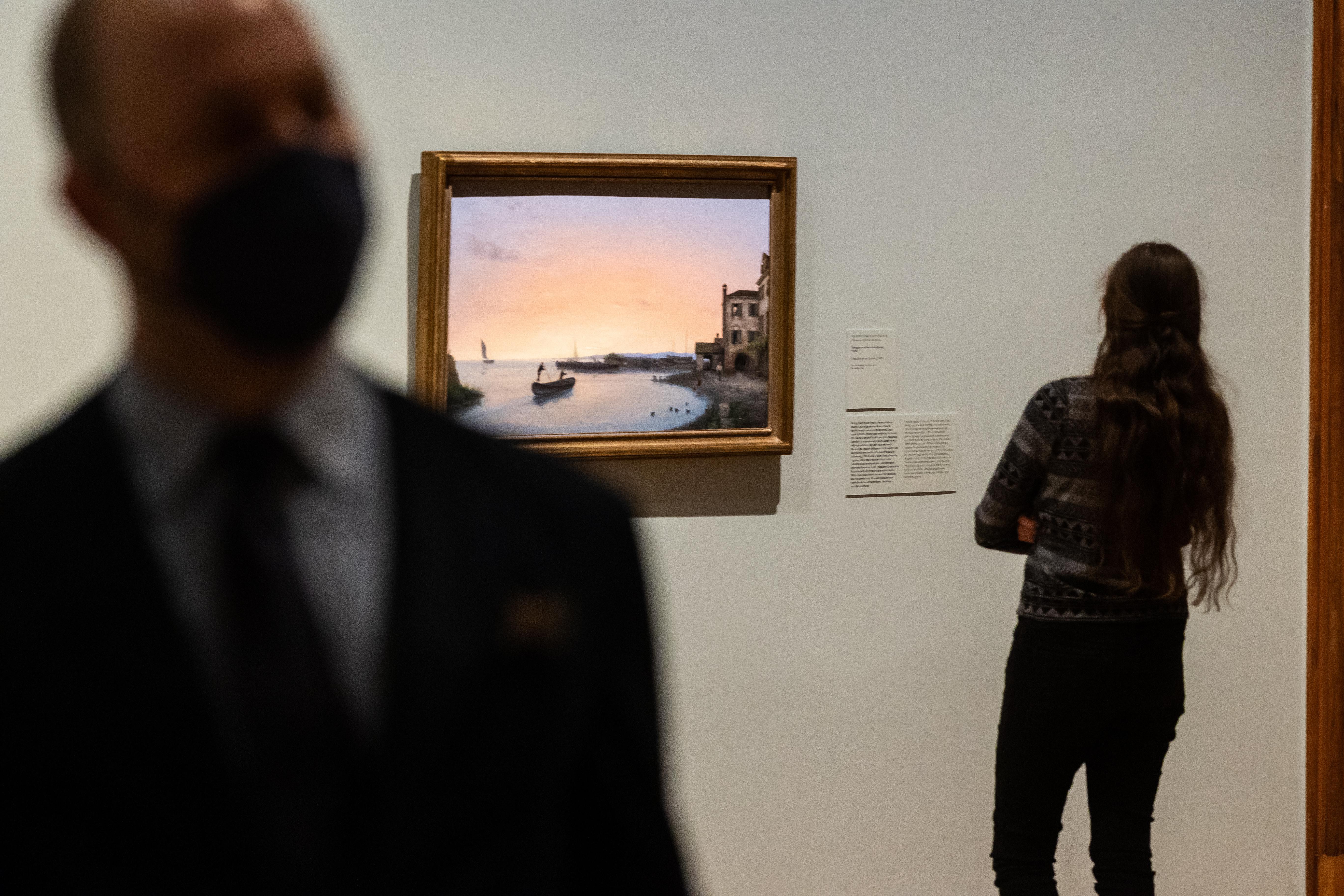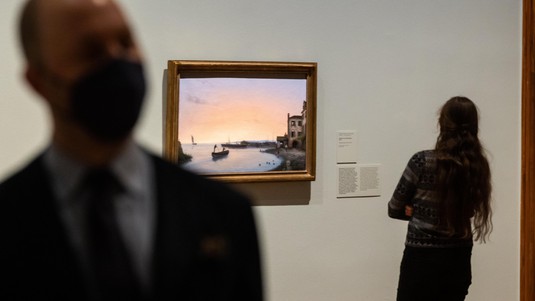DHLAB to enrich Venice model with Austrian collections

Opening of the Viva Venezia exhibition, 16 February 2022 © Ouriel Morgensztern/Belvedere, Wien
The College of Humanities Digital Humanities Lab (DHLAB) has been invited to participate in a recently launched exhibition at Vienna’s Belvedere Museum; an exchange that marks a longer-term collaboration as part of the lab’s SNSF-funded Parcels of Venice project.
“Parcels of Venice” is a four-year research project that aims to use computational and digital humanities approaches to model the evolution of 19th-century Venice, based on data extracted from historical documents such as population records and cadasters (real estate maps). Now, through a new collaboration with the Belvedere Museum in Vienna, project leads Isabella di Lenardo and DHLAB head Frédéric Kaplan hope to add documents, paintings, and photographs from Austria to their model.
The partnership kicked off on February 16th with the opening of Viva Venezia: an exhibition curated by Franz Smola that explores the “invention” of Venice as “a myth that has been part of Austria's collective memory since the 19th century”, when Venice was part of Austria’s Habsburg Empire. The exhibition, which runs through September 4th, is primarily based on Austrian paintings and photographs from the period.
Following an invitation from Smola, the DHLAB has contributed a video depicting the evolution of the Venice territory from 1100 to 1800, which sets the scene for the exhibition.
“No other tool could be more appropriate to illustrate, in one minute, the expansion and reduction of the territory of the Republic of Venice in the Eastern Mediterranean. This is a best-practice example how digital tools can support and enrich an exhibition of predominantly conventional art works,” Smola says.
Viva Venezia also features a film projection on the methodology of the Venice Time Machine project, which has its roots in DHLAB research, and now forms part of Time Machine Europe.
“We placed this video in the center of our exhibition, and the visitors love it; likely because it offers an easy visual bridge from ancient Venice to current methodologies dealing with the city's history,” Smola adds.
Precious research material
Kaplan says that in addition to being a “milestone and recognition” for the lab, the collaboration with the Belvedere represents an opportunity for the Parcels of Venice project to further its research thanks to the resource of Austrian collections, which will enrich their current model of Venice’s urban and population evolution.
“The paintings and photographs of this exhibition are precious materials, as we are working on a physical reconstruction of Venice, including the facades of buildings and the structures of streets,” Kaplan explains.
“Parcels of Venice focuses on a period when Venice was under French rule, followed by Austrian domination, and then Italian domination again. The Austrian part of the city’s history was missing from our initial set of documents, so the occasion of this exhibition is a great opportunity to strengthen our connection with Vienna in that respect.”







